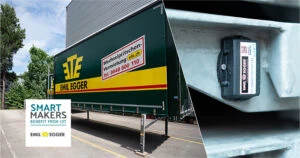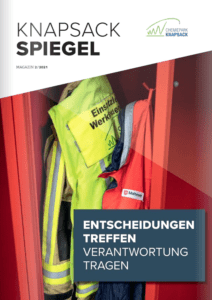This major release of thingsHub 4 is the next step to further simplify the use of IoT technologies such as IoT sensing, asset tracking, LoraWAN, time series analysis and dashboarding. To this end, the web user interface has been redesigned according to the latest user experience principles and re-implemented on the powerful Angular front-end technology. Many of the existing functionalities can now be operated even more dynamically and IoT data can be displayed in real time.
Highlights of the new version
In the following we would like to briefly present the highlights of the new version.
New web user interface optimized for mobile use
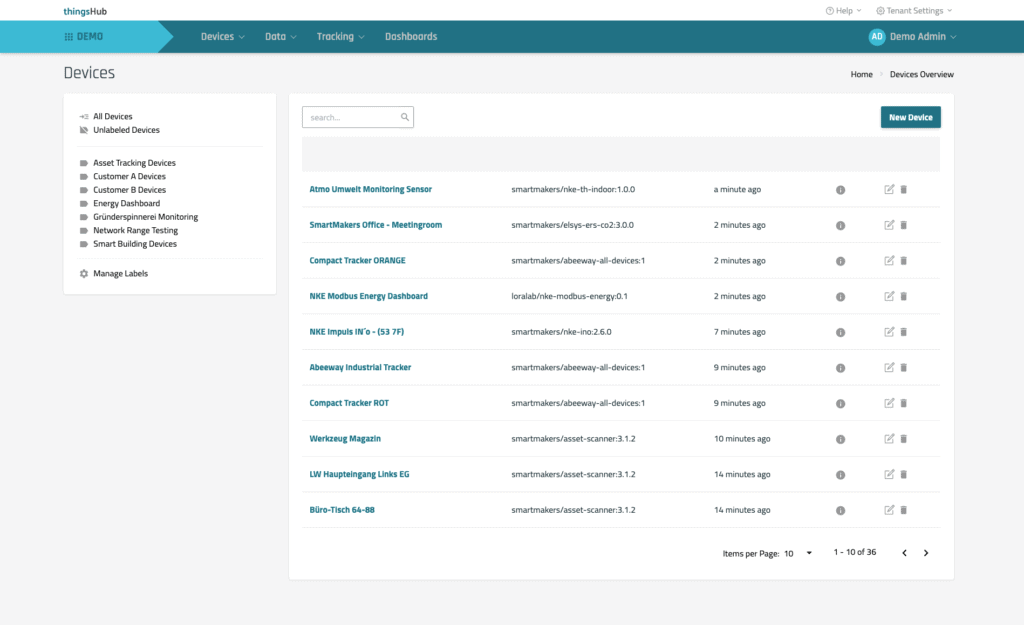
The new user interface has been optimized in many aspects. The main navigation has been adjusted in its contrasts so that it stands out better from all other elements of the application, making it easier to navigate. The header now takes up less space in the upper part of the browser window.
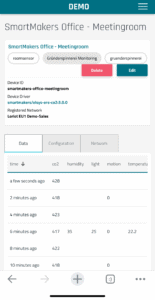
A uniform scheme has been defined for all page types and functions, according to which they are structured and function. Fonts and colors for linking elements or the tabular representation of data have been standardized.
As IoT remote monitoring and asset tracking solutions are often used on cell phones and tablets, the display and usability have been optimized for these devices. All thingsHub components adapt dynamically to the respective screen size in order to offer the user the best possible usability.
Improved device management and device driver management
As one of the most frequently used modules of thingsHub, device management has been significantly revised. In order to create as much space as possible for displaying the data table, all adjustable aspects of a device have been moved to separate modal dialogs. The tab navigation allows the user to switch between received IoT data or network traffic.
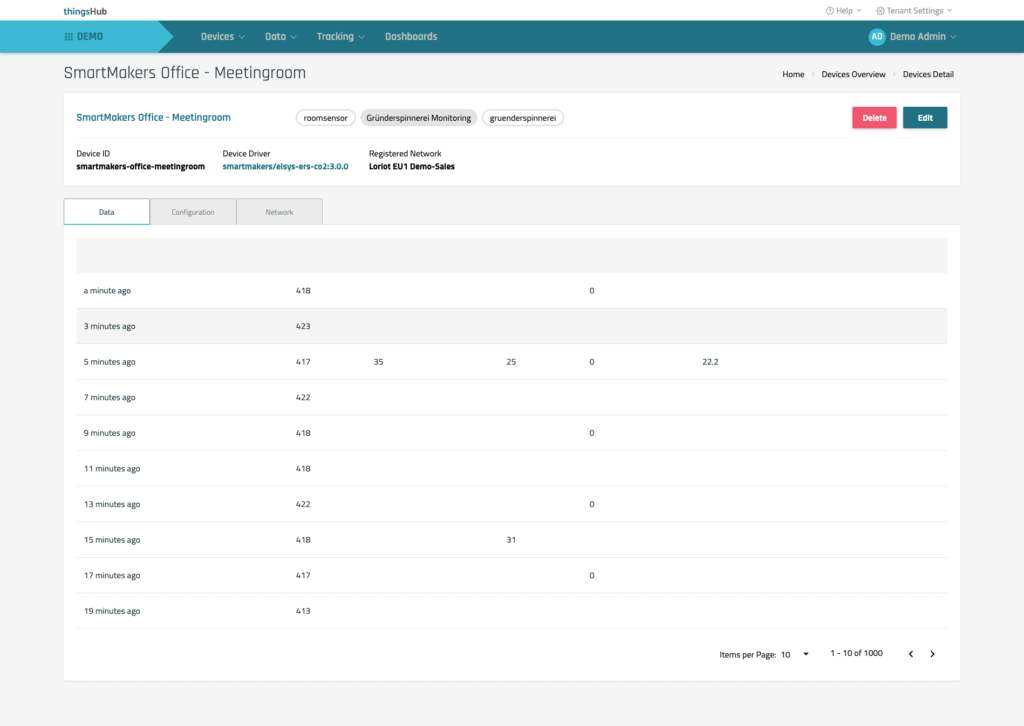
The network traffic table shows all received uplinks, as well as the downlinks sent to the device. Information such as the signal strength or the gateway used can also be viewed.
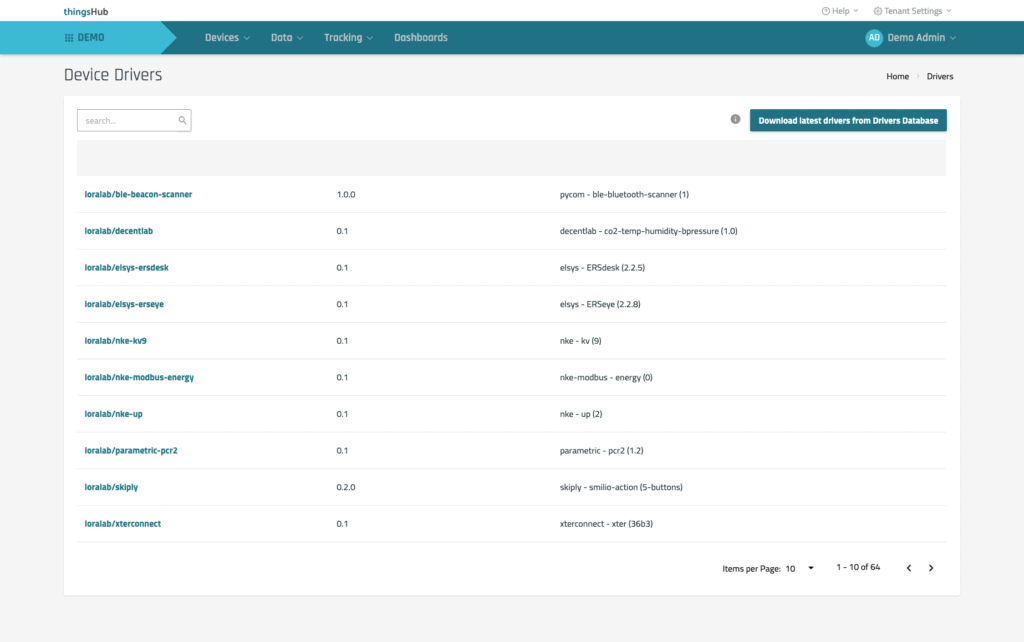
Extensive roles & rights management
To significantly improve the security of your IoT solution, a comprehensive role-based authorization system has been implemented with thingsHub 4. Roles can now be assigned to users to determine which modules they have access to in thingsHub and whether they can make changes there or only have read-only rights.
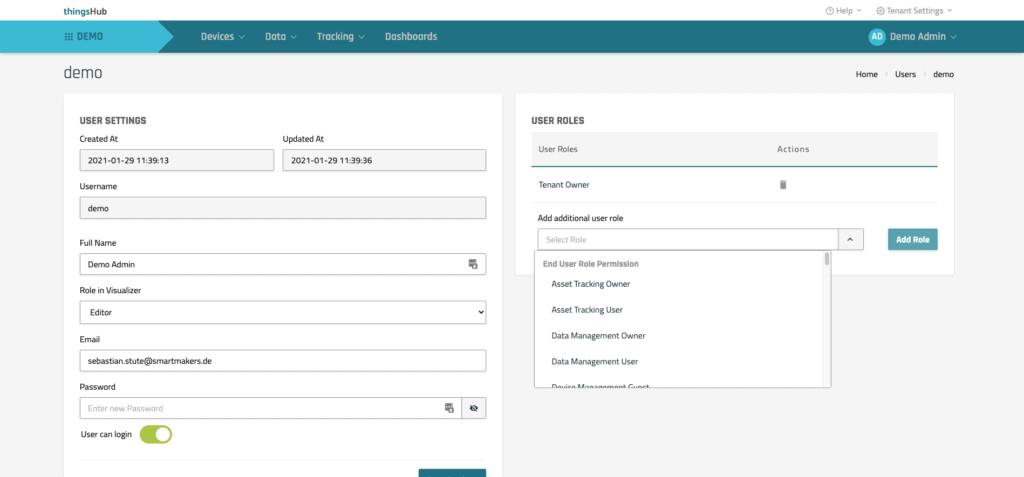
The permission system can also be used in all interfaces between thingsHub and other systems. All roles and permissions are implemented via the existing REST API endpoints and can thus also be used for interface users.
Learn more?
View release notes in online documentation.


